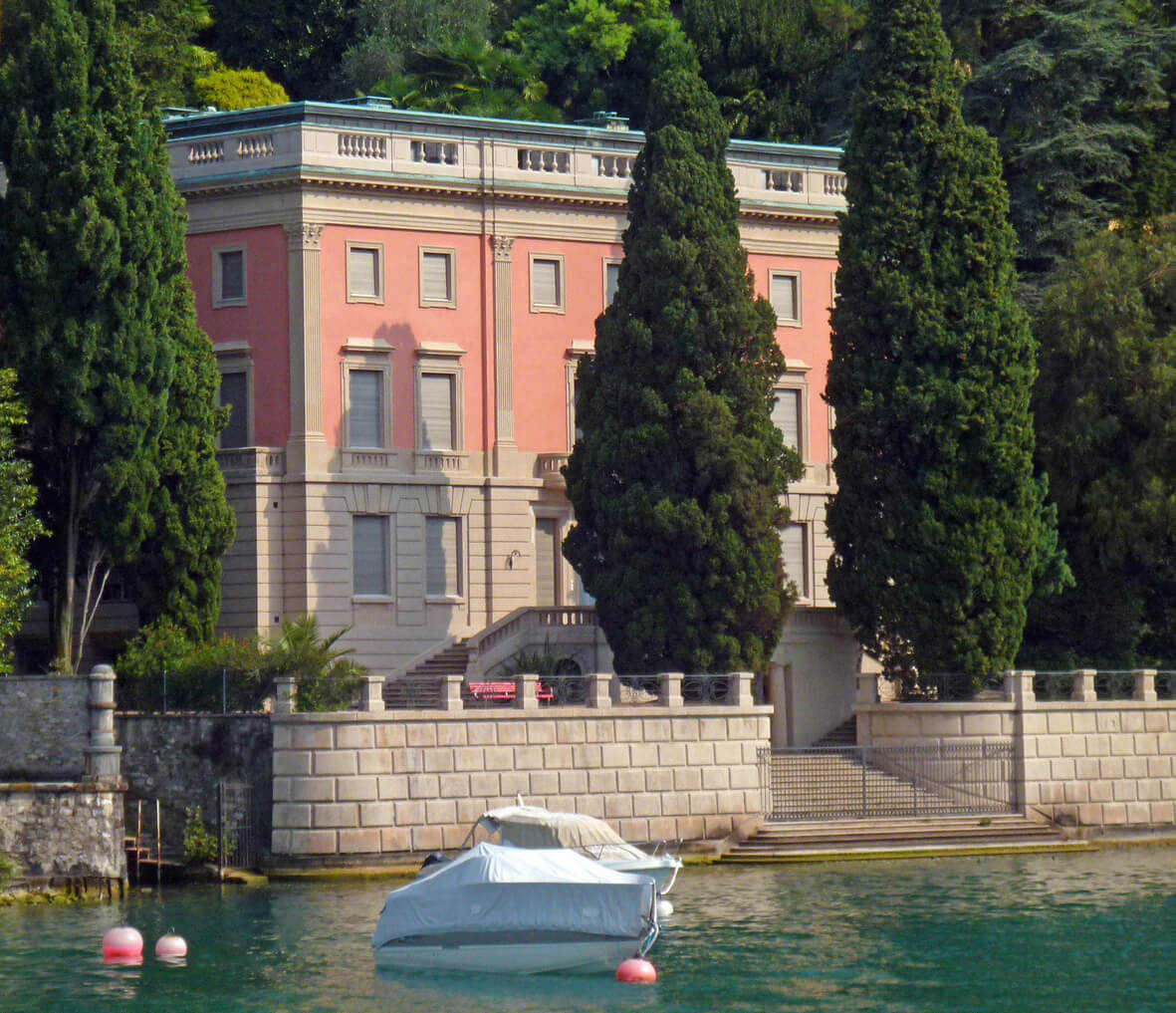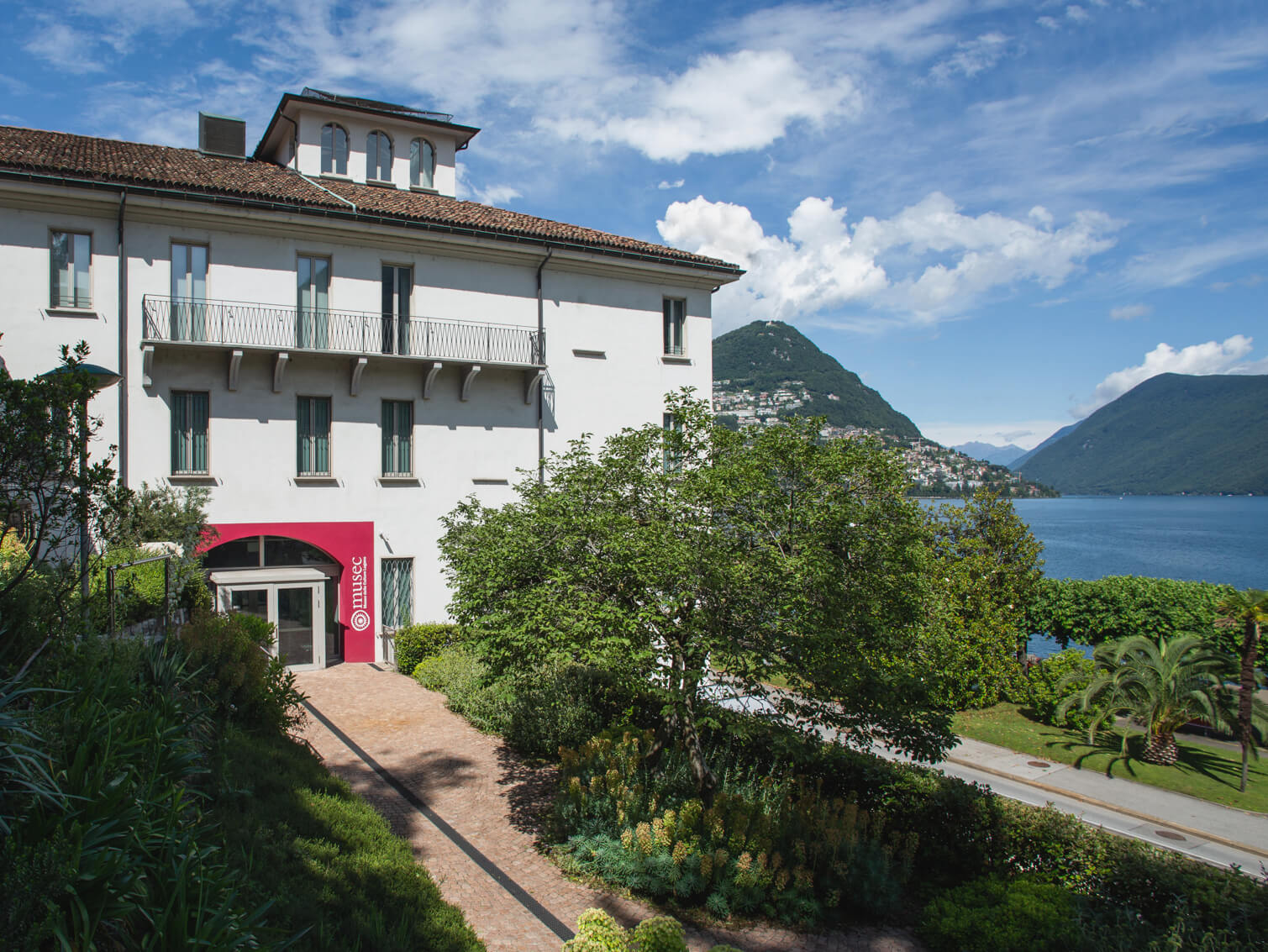Established in 1985 and opened in 1989, the Museum of Cultures (Museo delle culture) holds most of the extraordinary collection donated by Serge Brignoni (1903-2002). The Ticino artist, a fine connoisseur of ethnic art, acquired masterpieces of “primitive” art over the long period from 1930 to the mid-1980s, when he decided to donate his valuable collection to the City of Lugano. The contract between the generous patron and the then Head of the Museums and Culture Department of the City of Lugano, Benedetto Bonaglia, was made official on November 25, 1985. The City of Lugano designated the Heleneum as the site of the future museum, which would permanently house the Collection. This splendid neoclassical-inspired villa, which belonged to Hélène Bieber, is situated on the lakeshore within a striking botanical park with tropical and sub-tropical species. The museum was inaugurated on September 23, 1989, and opened its doors the following day. That same year Marcello Coray designed the Museum’s logo by stylizing the decorative element (kap-kap) that decorates the chest of the four figures of masked men, carved in horizontal succession on a frieze from Papua New Guinea, from the Brignoni Collection. The inventory of the works, the layout and the first printed catalogue were taken care of in synergy with Brignoni himself and a team of researchers coordinated by Christian Giordano, who was appointed director of the Museum and remained there until June 1992, when he resigned due to a lack of identity of views with the direction of the Department. From December 1993 to December 1996, the Museum was entrusted to Carla Burani. A decade followed in which the Museum, less and less considered by the City’s cultural policy, risked being shut down. Faced with the increasingly concrete hypothesis of the Museum’s divestment, which led to a wave of public protests and inflamed the local press in the summer of 2004, the City Hall that took office that year decided to relaunch the institution by appointing curator, and then director, Francesco Paolo Campione who, in October 2005, presented the System of Activities and the Plan of Activities that are to date the basis of the Museum’s current scientific and managerial structure.


At its meeting on January 10, 2007, the Lugano City Hall approved the proposal to change the name of the Museum to “Museum of Cultures,” effective immediately. This decision is based on the need to overtake an anachronistic and, in some ways, improper definition. The name “Museum of Extra-European Cultures” did not, in fact, express the specificity of the heritage preserved by the Museum, nor a precise design vocation, but was above all the result of an ideological compromise that had characterized the history of anthropological thought in the 1970s and 1980s. The formulation “Museum of Extra-European Cultures” was a solution that intended to go beyond the old definitions of “Ethnographic Museum,” “Museum of Ethnology,” and – then – “Museum of Primitive Arts”; definitions of which all the defining weight of an otherness determined according to an ethnocentric worldview could be heard echoing in the mid-1980s, but could not be a solution capable of expressing the accomplished and definitive absorption of the ethnological/ethnographic paradigm into the broader field of anthropological sciences. “Museum of Cultures” is therefore a suitable choice that expresses, from a scientific point of view, in an accomplished manner, the heritage preserved by the Museum and its most genuine vocation to deal in a broad sense with the forms of ethnic, ancient and modern art, with oriental arts and with modern issues related to the field of anthropology of art and, more generally, with cultural anthropology.
As of 2019, a new road has opened on MUSEC’s path. Indeed, the will of the Lugano City Hall was to entrust the management of the Museum to the Culture and Museums Foundation, which ensures its operation while maintaining its identity, autonomy and image. The Foundation allows a more effective management, capable, thanks also to the relocation to the new location of Villa Malpensata, of generating further synergies and economies of purpose and of intensifying the interaction with the territory and the public. The restoration of Villa Malpensata, which began in 2014, involved – in addition to the main building – both the two buildings flanking it to the north, destined for offices and the research and documentation center, and the terraced garden to the south, reorganized to accommodate the museum’s outdoor spaces, the café and relaxation corner and the raised terrace leading to the new main entrance.
All spaces have been rearranged according to international climatic and museotechnical standards and equipped with the best security conditions. There are three spaces designated for temporary exhibitions: the Spazio Maraini intended mainly for photography and graphic design exhibitions; the Spazio Cielo that hosts exhibitions of Collections and contemporary art; and the Spazio Mostre declined on two floors, i.e., the space that MUSEC allocates for large-scale projects that are open to the public for a minimum duration of six months. The Treasure Space, the room located at the entrance of the museum, is accessible free of charge and houses some masterpieces from the MUSEC Collections.
In addition to exhibition spaces, Villa Malpensata offers the possibility of renting spaces, indoor and outdoor, of different sizes for conferences, seminars, meetings, workshops and private events. There is also the possibility of integrating guided tours of the museum’s exhibitions into the event.


